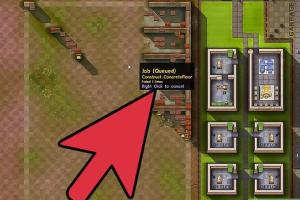Mastering Prison Architect: Building a Profitable, Low Danger, Riot-Free Prison

-
Quick Links:
- Introduction
- Understanding Prison Architect
- Key Concepts for a Successful Prison
- Step-by-Step Guide to Building Your Prison
- Case Studies of Successful Prisons
- Expert Insights and Tips
- Data-Driven Analysis
- FAQs
Introduction
Prison Architect is a complex simulation game that challenges players to design and manage a high-security prison. Building a prison that is not only profitable but also minimizes dangers and riots is a daunting task. This comprehensive guide will provide you with the tools and strategies needed to achieve that goal, ensuring your prison operates smoothly and efficiently.
Understanding Prison Architect
Before delving into the specifics of building a prison, it is essential to understand the mechanics of Prison Architect. The game revolves around managing various aspects of prison life, including inmate needs, staff management, and facility maintenance. The balance between security and rehabilitation is crucial for a successful prison.
The Importance of Design
A well-thought-out design can significantly impact the safety and profitability of your prison. Consider the following factors:
- Cell layout
- Common areas
- Security measures
- Staff facilities
Key Concepts for a Successful Prison
To create a profitable, low-danger, riot-free prison, you must grasp several key concepts:
1. Understanding Inmate Needs
Inmates have various needs, including food, sleep, and recreation. Neglecting these needs can lead to unrest and riots. Ensuring you provide adequate facilities for each need is crucial.
2. Staff Management
A well-trained staff is essential for maintaining order and security. Invest in training programs for your guards and ensure you have enough personnel on duty during high-risk times.
3. Security Measures
Implementing robust security features, such as surveillance systems, dog patrols, and secure perimeters, will deter potential riots and escape attempts.
4. Financial Management
A successful prison must also be profitable. Carefully manage your budget, considering costs for construction, staff salaries, and inmate welfare programs.
Step-by-Step Guide to Building Your Prison
Step 1: Planning Your Layout
Start by sketching out a basic layout of your prison. Consider the flow of inmate movement and the proximity of various facilities.
Step 2: Construction Phase
Your initial construction should focus on essential facilities:
- Cells
- Kitchen and Canteen
- Common Room
- Shower Facilities
Step 3: Security Implementation
Once basic facilities are in place, enhance security with:
- Perimeter fencing
- Guard towers
- Metal detectors
Step 4: Staffing Your Prison
Recruit a diverse staff, ensuring you have enough guards, cooks, and maintenance workers. Training is key to maintaining order.
Step 5: Balancing Needs and Security
Regularly assess inmate needs and adjust your facilities and programs accordingly. This balance is essential to prevent riots.
Case Studies of Successful Prisons
Learning from successful examples can provide valuable insights. Here are a few case studies:
Case Study 1: The Rehabilitation Facility
This prison focused on rehabilitation rather than punishment, leading to a significant reduction in recidivism rates.
Case Study 2: The Profit-Driven Prison
By implementing vocational training programs, this prison was able to reduce costs and generate income through inmate labor.
Expert Insights and Tips
Experts emphasize the importance of data analysis and inmate feedback in improving prison management:
- Regularly review inmate satisfaction surveys to address issues proactively.
- Utilize data analytics to track the effectiveness of programs and security measures.
Data-Driven Analysis
Statistical data can enhance your management strategies. Consider the following:
- Average inmate satisfaction scores in relation to facility upgrades.
- Cost-benefit analysis of rehabilitation programs versus traditional punishment methods.
FAQs
1. What is the best layout for a low-danger prison?
A layout that minimizes blind spots and promotes visibility among staff is ideal.
2. How can I reduce the risk of riots?
By addressing inmate needs and ensuring proper staffing, you can significantly reduce riot risks.
3. What facilities are essential for a profitable prison?
Essential facilities include a kitchen, canteen, shower areas, and recreational spaces.
4. How important is staff training?
Staff training is crucial for maintaining order and ensuring safety protocols are followed.
5. Can I run a prison on a budget?
Yes, by carefully managing resources and prioritizing essential facilities, you can run a budget-friendly prison.
6. What are the common causes of riots?
Common causes include unmet needs, overcrowding, and poor staff morale.
7. How can I profit from my prison?
Implement vocational programs that allow inmates to work and generate income for the prison.
8. Is it necessary to have a rehabilitation program?
While not mandatory, rehabilitation programs can significantly reduce recidivism and improve inmate satisfaction.
9. What role does inmate feedback play?
Inmate feedback is vital for adjusting programs and facilities to meet their needs effectively.
10. How can I keep my prison secure?
Regular assessments of security measures and staff training are key to maintaining a secure environment.
By following the strategies outlined in this guide, you can build a profitable, low-danger, riot-free prison in Prison Architect. Remember, the balance between security and rehabilitation is essential for long-term success.